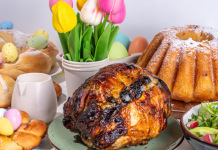What kid (or adult) doesn’t love October? My mind instantly starts thinking of lush pumpkin patches, colorful leaves, and Halloween costumes! Halloween was always one of my favorite holidays, as it provided the opportunity to be anyone or anything for a day. I was blessed with a crafty mom who was able to make even my most far-fetched Halloween costume wish a reality. For kids with special needs, Halloween can be an equally special day since they can be anyone or anything that their heart desires.
However, according to the American Cerebral Palsy Foundation, children with special needs are more than 3x as likely to be left out of social activities. Halloween can present some special and unique challenges for kids with disabilities. So what can we, collectively as a city, do to help our friends and neighbors with disabilities celebrate Halloween when they’re out trick-or-treating? Show a bit of Halloween hospitality by incorporating these few small gestures into your Halloween night:
1). Compliment your trick-or-treaters’ costumes.
This should be obvious. However, when seeing a child with special needs, one’s focus often goes straight to their disability and struggles. Yes, mobility may be a bit more difficult for some kids when compared to other able-bodied kids. But these kiddos don’t notice their disability and they certainly don’t want everyone else focusing on that. They want you to notice their amazing costume! On Halloween, they are not “little Johnny who uses a walker or wheelchair”; instead they are “Batman” or “Harry Potter”! Acknowledge and compliment their costume.

2). Always be understanding, friendly, and courteous — even if a child is not trick-or-treating in a costume.
Whether the child is a stubborn toddler who simply refuses to wear it (despite all well-meaning parental bribery attempts) or a child with Autism Spectrum Disorder (ASD) who cannot tolerate wearing costumes due to sensory issues, make sure to offer a smile, a friendly hello, and a treat to all kids trick-or-treating!
3). Make your treats accessible to all trick-or-treaters.
As a mom who loves to push a stroller around town, I can tell you which shops are easy to navigate and which storefronts have unavoidable stairs. We often think of this when we are out and about with a stroller, but many parents don’t consider accessibility on Halloween until they have a treat-or-treater who physically cannot go up onto the porch. Although Halloween candy is traditionally handed out from the front door, please consider the child in a wheelchair or the child using a walker who cannot go up the stairs to your front door. We can make it a bit easier for these kiddos by eliminating the stairs and handing out candy from the front yard.
4). Provide non-edible items for children who can’t eat Halloween candy.
For children who use feeding tubes (commonly known as g-tubes or “PEG” tubes) or others with dietary restrictions (diabetes, allergies, special diets, etc), consider offering a non-edible treat so they feel included. My grandpa was a dentist and for obvious reasons wasn’t a big fan of sugary candy. Instead, he handed out little rings, stickers, toys, and/or coins to all the kids who stopped by his house. His goal was to prevent cavities, but he also inadvertently included the children who did not eat in “traditional” methods. I’m not suggesting you forgo candy (although that would certainly cut down on your sugar consumption, especially if you’re like me and sneak a piece of candy for yourself each time you plop one into a trick-or-treater’s bag), but having non-candy options can be a thoughtful gesture.

5). Be willing to hand out treats to everyone, not just the children who are able to say “trick or treat”.
I’ve known homes that refuse to hand out treats unless the child tells a joke or says “trick or treat.” While this can be entertaining, it excludes children who fall into the non-verbal category. A few years ago, I met a parent who programmed their non-verbal child’s talk board to say “trick or treat.” Their child was filled with joy (and their bag was subsequently filled with treats) after he eagerly pushed the button each time they approached a house on Halloween. However, not every child has an advanced communication device, and I hope you consider handing out treats without any requirements.
6). Support local programs and activities.
Last but not least, show your support for local Halloween activities either with your attendance or with a donation. For example, my little buddy Koen (the handsome boy who is letting me use his photos) loves participating in a yearly Halloween parade sponsored by a local hospital. For many kids like Koen, it is the only way they can trick-or-treat since it is climate controlled with wide, clear hallways that are able to accommodate his wheelchair. Events like this would not be possible without the contributions of generous donors and sponsors.
Our goal should be for ALL children to embrace and experience the fun activities of childhood, especially holidays and special events. Don’t forget to keep your sidewalks clear of debris, parked cars, etc. to help everyone safely navigate the neighborhood, especially kiddos in wheelchairs and with other mobility concerns. Cheers to a safe, inclusive and spooktacular Halloween!
(Special thanks to my friend Koen and his amazing mama Jordan Langerheinz for providing me with the adorable photos for this blog post!!)












Thank you for these practical and thoughtful suggestions!
Comments are closed.